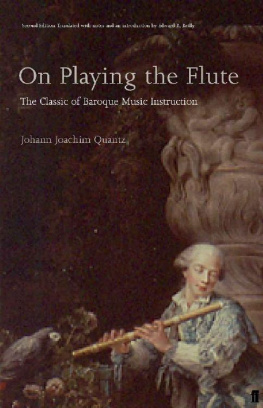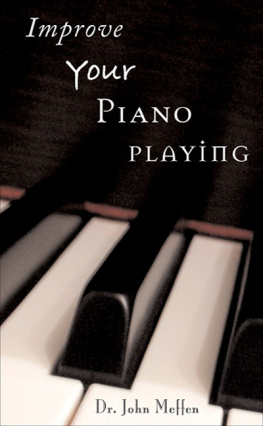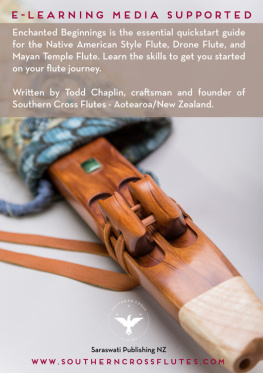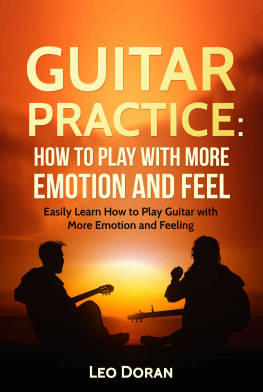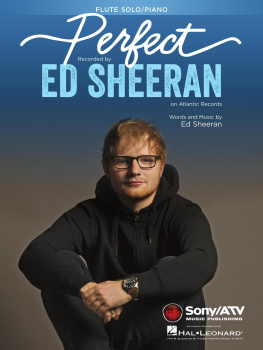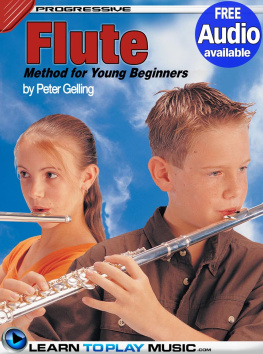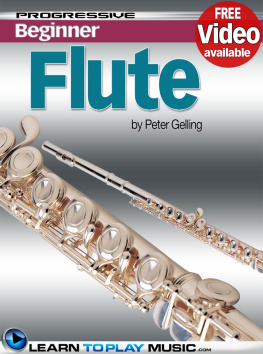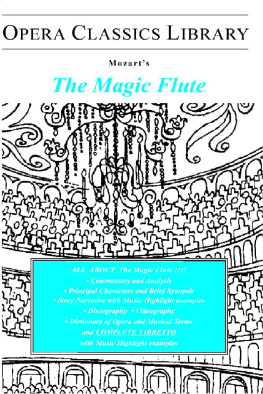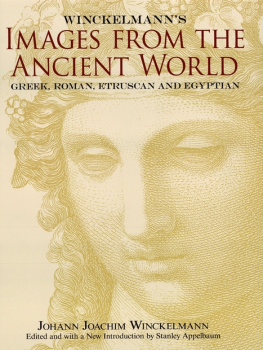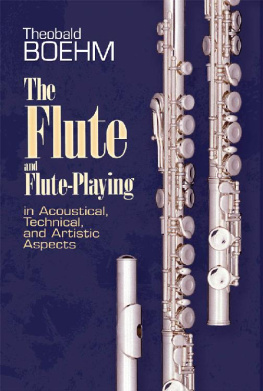INTRODUCTION
T HE value of Quantzs Essay of a Method for Playing the Transverse Flute as a major source of information about eighteenth-century musical practice and thought has been long recognized. The work has been repeatedly cited on a wide range of topics from the time that musicians and scholars first began to comprehend fully that an understanding of earlier approaches to performance might have a vital bearing on the convincing re-creation of music of the past.
The reasons that the Essay has been so frequently singled out, rather than one of the other flute tutors of the period, lie in the unusual scope of the treatise, and in the detailed treatment that Quantz accords his subject. If the work were no more than a reproduction of the standard material found in most eighteenth-century flute methods, it would probably be considered only as a particularly good example of a commonly encountered type. But Quantz was an exceptional teacher, and his treatise was conceived as far more than an introduction to flute playing. In the Essay he offers his readers a comprehensive programme of studies for the performing musician.
Quantzs aim was that of good music teachers everywhere, to train a skilled and intelligent musician, and not just a mechanical player . To provide a basis for the realization of this goal he organized the Essay as three more or less separate but closely interrelated treatises. Each deals with an important phase of the performers training, but each is also designed so that it can be read independently of the others. The first is devoted to the education of the solo musician, the second to accompanying, and the third to forms and styles.
The first of these three divisions (Chapters IXVI) is carefully arranged in two sequences of chapters. The first ten begin by introducing the student to the history, the structure, and the mechanics of his instrument, that is, embouchure, tone production, fingering, and articulation. The basic forms of ornamentation, appoggiaturas and shakes, are then dealt with; and a general review, with some remarks on individual practice, concludes the exposition of the rudiments of flute playing.
The next six chapters of the opening treatise form more advanced stages of the performers training. In them Quantz is primarily concerned with developing the ability of the student to recognize and convey the character of each work that he performs. The various types of fast and slow pieces and their appropriate execution are explored, as well as dynamics, free ornamentation, and cadenzas. Discussion of these areas leads naturally to the final chapter of this portion of the Essay, in which the student is advised on problems associated with his performance in public.
Having provided the flautist with a solid musical and technical foundation on his own instrument in the first part of his work, Quantz then directs the attention of his pupil to those instruments that would accompany him in concerts. Chapter XVII, which forms roughly one-third of the book, consists of a number of separate sections devoted to the duties of the leader of an ensemble, each member of the string family, the keyboard player, and accompanists in general. In turn many important subjects are taken up in addition to matters connected with the technique of each individual instrument. Tempo markings, intonation, problems of balance, the size and arrangement of an ensemble, and many other matters are considered in detail.
In the concluding portion of the Essay (Chapter XVIII), Quantz rounds out his students training with a lengthy discussion of contemporary forms and styles. The first half of this discussion is devoted to clearly worded descriptions of most of the principal types of composition then cultivated, especially those favoured in the courts of central and northern Germany. The remainder consists of a comparison and evaluation of Italian, French, and German styles of performance and composition.
The Essay as a whole is preceded by an excellent introduction on The Qualities Required of Those Who Would Dedicate Themselves to Music. This section, like many others in the Essay , vividly brings home the constancy of certain aspects of musical life, and still offers much sound advice to those interested in becoming professional musicians.
That Quantz intended his work for musicians of all kinds is clear both from the manner in which the Essay is organized and his own Preface. Only about 50 pages of the original 334 are devoted exclusively to the flute. Although the first of the three main divisions of the work was conceived specifically for the flute, most of the material after Chapter VII is equally applicable to other instruments and to singing. The preceding discussions of notation, breathing, and articulation, however, also contain much valuable information for performers other than flautists.
Quantzs actual treatment of the various subjects with which he deals matches the breadth of his basic plan. As an experienced teacher he had obviously recognized the need to be clear and specific. He also strove diligently to avoid the superficiality of those methods that offered quick mastery of an instrument with little effort. In many areas he provides much more concrete information about important points of performance than either his immediate predecessors or his followers; and his attention to detaileven if at times it becomes pedanticconsiderably enhances the value of the Essay as a guide for modern performers. Subjects such as extempore embellishments, dynamics, cadenzas, and tempo are explored more fully than in any other treatise of the time. The valuable works of which appeared shortly after that of Quantz, show a considerable extension of the treatment of the keyboard and violin as well as of some other matters, but frequently seem to assume some knowledge of Quantzs treatise.
The unique combination of breadth and detail found in the Essay could scarcely have been better designed to provide a more stimulating introduction to musical thought, performance, and style in the eighteenth century, and more than justifies a long overdue complete translation into English. Yet, important as the treatise is, modern performers must remember that the work is the synthesis of the experience of one man active at a particular period in time and in a certain milieu. Solutions to the various problems of performance were as diverse during that time as they are today.
Quantzs general approach in his Essay, and his specific treatment of the many subjects that he examines, grew out of years of personal experience in all the phases of music that he discusses. During his long career he was active and successful as a solo and orchestral performer on a variety of instruments, as a composer, as a teacher and writer on music, as a director of a chamber ensemble, and as a maker of flutes. To see the Essay in its historical context, a picture of his life and musical training, and a knowledge of some of his compositions are both valuable. In Quantzs case the catchall label teacher of Frederick the Great has done much to obscure recognition and study of the crucial quarter-century that he spent at Dresden, as well as to link subjective feelings about Frederick with estimates of Quantz. The old maxim that theory is always fifty years behind practice has also tended to cloud the fact that Quantz was very much a part of his time, and that his work was conceived in relation to the music cultivated during his prime. Happily, Quantz himself has provided many of the essentials of his background in a short autobiography, written in 1754 and published the following year. This work forms the basis for much of the brief sketch that follows.

